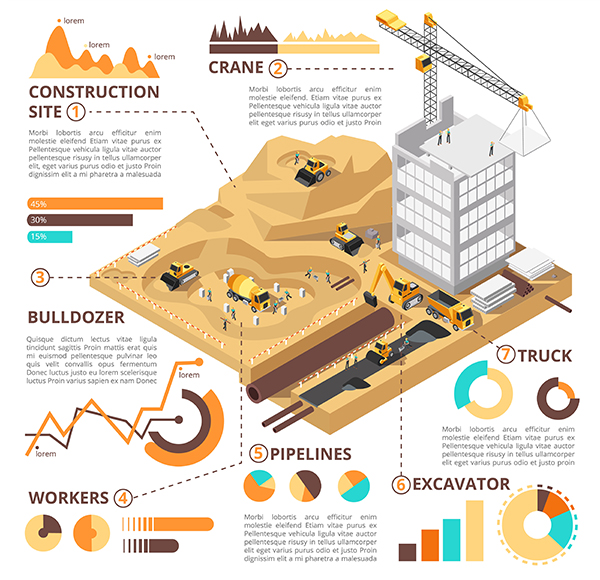Each year we are met with new trends in technology that shape the next cycle of innovation. While there are trending patterns in technology, each industry implements these technologies to enhance and facilitate its unique processes.
As pioneers and experts in software development, we get an inside look at each industry’s technological pursuits. Sometimes we even get to lead it, like with LA Wallet.
Part of our role as business consultants is helping you see what’s coming next, then as software developers to help you implement more efficient and revenue churning solutions. Select your industry below to jump to your top trends:
Industrial Automation/Engineering
Healthcare
In 2018, many healthcare practices and businesses began asking our experts about the use of mobile technologies and software. 2019 will be the year of action, following the example of those who have already committed to the transition, like the Woman’s Pregnancy and Our Lady of the Lake Physician Exchange apps.
Out of the 91% of adults who always have their mobile device in hand or in close reach at all times, 52% prefer to receive medical information via their mobile device. The mobile health global market reached $26 billion in 2017 and is estimated to grow 33.5% per year through 2020.
Envoc Identified & Verified Trends
1. Integrated System Efficiency – Healthcare practices across the board are beginning to notice their outdated systems, or they are quickly outgrowing them. With so many processes, insurance connections, patient portals, and even device data integration, day to day activities can become incredibly disconnected and inefficient for employees and patients. Even health-related companies entering the market are experiencing trouble finding an existing software box that’s a good fit, making custom solutions a necessity.
2. Patient Retention has always been a minor focus for healthcare, but it’s quickly turning into a primary objective. 54% of millennials switched healthcare providers in 2016-2017, and 42% are likely to switch in 2018-2019. Among several strategies to increase patient retention, technology is the leverage a practice or company has outside of the office. A mobile app is an extension of your in-office relationship, and it’s how you can educate, nurture, communicate with and keep patients coming back.
A Case Study of Reduced Hospital Costs
“For example, Philadelphia-based Hahnemann Hospital conducted a pilot study that introduced a mobile app that supported email and text messaging to over 350 congestive heart failure patients. During this study, patients received email and text message reminders to get them to schedule follow-up appointments after being discharged from the hospital.
As a result, the hospital was able to reduce its 30-day readmissions by 10% that was a 40% improvement over their baseline. Readmissions also decreased to 16% for patients who received messages, and the readmissions rate for those who confirmed an appointment was 8.8%, compared to 15.4% for those who didn’t confirm. At the end of the 10-month pilot, it was clearly demonstrated that not only could mobile apps help patients to keep their appointments to get the proper follow-up care; it could contribute to reduced hospital costs.” [Source]
3. A shift in focus to online presence has taken over many of our conversations lately, especially in the health industry. Studies show that the majority of individuals depend on social media and consumer reviews when making a decision about a healthcare provider and are more likely to trust those with active profiles and positive reviews. Properly managing this first level of engagement with potential patients is key to converting them into loyal patients.

4. HIPPA security has taken on a new, vital level of importance due to an increasing use of various apps, platforms, and devices. Without a HIPPA certified developer, your practice or business could be in violation of compliance and endangering the privacy of all of your patients, clients, and employees. On a daily basis, 44-72% of hospital nurses and doctors use smartphones and tablets to research medicine and communicate internally. Even these communications need to be secure and compliant, which is why Our Lady of the Lake launched the Physician Exchange app.
Envoc became HIPPA certified in 2018 to ensure your technology upgrades and all communications are secure and compliant.
5. Telemedicine patients worldwide have nearly doubled in number from 3.84 million in 2017 to 7 million in 2018, an exponential trend going into 2019. Over half of U.S. hospitals currently have a telehealth program and 90% of healthcare executives say they have telehealth programs in the pipeline. With an increasing focus on patient convenience, it’s not surprising that direct-to-consumer telemedicine is on the rise.


6. Wearables are being used for more than just personal goal setting and growth. The data gained by wearable devices can be lifesaving, and 93% of physicians in a survey believe these wearable, integrated devices can improve a patient’s health. The real-time monitoring empowers a patient to take ownership of their own health while providing increased visibility for the doctor.
Conclusion
While these trends may not necessarily be new to 2019, they are the top trends shaping how healthcare professionals and patients interact with one another, and it will eventually affect your bottom line. With growing acceptance comes heightened public expectation, and it’s our job to help you prepare for what’s next.
In healthcare technologies, it’s important to make sure you partner with the right software development company. To start a conversation with our HIPPA certified mobile and software development team, contact us using the button below.
Legal/Law
A survey showed that 62% of people believe technology should increase employee productivity and collaboration. In a world where technology adoption in the average US household is skyrocketing, our businesses shouldn’t be any different. Here are 4 trends for law firms and legal services to adopt in 2019.
Envoc Identified & Verified Trends
1. Process-driven software is increasing in demand. After centuries of traditionally creating, filing, managing, and sending copious amounts of paperwork, many law firms and legal businesses are updating to custom software solutions. Over the past few years, we’ve developed several custom systems to manage template management, document automation, client communications, and relationship management systems. Each system results in higher efficiency and thus higher return on investment.

2. Secure cloud storage is a necessity, but there are a couple more hoops to jump through when dealing with legal information. To those who are unsure of “the cloud,” it can be a challenging and even nerve-wracking transition. This is where partnering with an expert in cybersecurity and cloud infrastructure is key in making that transition. Envoc has assisted hundreds of clients in not only making the transition but also maintaining security protocols in the long term.
3. Digital presence deals with the power of Google algorithms to make or break your chances of gaining clients through online search parameters. 74% of visitors to your website intend to take action and contact you, but 83% check your reviews first. Many of those potential visitors will never make it to your site if they see a poor review first. Digital presence and reputation management help ensure you make the most of 100% of visitors to your website.
4. Startups are entering the field successfully, and they’re doing it with new tech. In an industry full of traditional and long-standing processes, startups are starting to find their “in.” Using proprietary mobile apps and online web portals, these companies are increasing efficiency in the legal system, lowering government costs, and increasing citizen accountability.
Conclusion
These trends may not seem like much at first glance, but they are the key trends that will shape the growth and success of the legal industry in 2019. Digital presence is the stepping stone to reaching your target clientele while easy and efficient processes increase your client’s lifetime value to your business, and secure cloud storage protects all parties.
The most innovative companies are expecting to grow more than 62% in the next 5 years, while lesser innovative companies are only anticipating 21% growth. Startups are typically considered more innovative than traditional, long-standing companies. Are you keeping up your technology game in the competition?
In legal technologies, it’s important to make sure you partner with the right software development company. To start a conversation with our cloud experts, digital intelligence wizards, or software development team, contact us using the button below.
Banking/Financial

With the latest 2018 Gallup Polls showing only a 30% confidence level in banking institutions among Americans, 2019 will be a pivotal year in earning back that trust. Technology allows that bridge of trust to repair and grow more quickly than ever.
Here are the top 5 technological advancements for banks and financial institutions to expect in 2019.
Envoc Identified & Verified Trends
1. Paper is going digital. Financial institutions have been making this transition for years, and it’s going to continue until paper is irrelevant. The focus in this trend isn’t necessarily the decreased use of paper but rather the convenience of digital processes, applications, transactions, and record keeping. The more convenient the process, the happier customers will be and the more likely they will be to return.
2. Better data is hitting its peak in necessity, especially for smaller banks. Data tells us who our best customers are, where they spend their time, how we can best reach them, and what conversion methods work best. Without this data, marketing tactics will be misguided, broad, and much more expensive. Better data means better targeting and higher return.
3. Microservices is growing in popularity for banking institutions, and the microservice architecture is reported to reach $32 billion by 2023. Microservices is an agile-focused methodology using one strong platform to support smaller component services that can be sold individually. When done correctly by a professional software development team, it is an incredibly organized, convenient, and lucrative service architecture.

4. Mobile and cloud banking are now an expectation. Over 77% of Americans own a smartphone of some kind, and 43% of bank customers use mobile banking. The increased adoption of technology in America isn’t a hindrance to banking institutions but an opportunity to expand and deepen relationships through technological convenience. Many banks have started offering these services, but the next step is expanding the value offered while making it easier than ever.
5. Artificial intelligence is a technological application banks and financial institutions are struggling to implement but know it is the future of banking. Surveys show that 71% of bankers see AI improving customer trust and confidence in their institutions, while 61% see cost savings and improved operations. Up to 62% report AI helping them stay compliant with regulations. The key to integrating AI with a financial institution is engaging experts and beginning a small market test. The institution that masters it first will reap the rewards.
Conclusion
Some trends are a large undertaking, but small steps still move a company in the right direction. Simple improvements like updated ATMs or mobile app and customer portal upgrades make a difference. Customers want to know their bank is keeping up with technology and security of the age, because that gives them confidence in their own security while banking with you.
With any technological upgrade, security and compliance are always of utmost importance. This is why engaging the right partner is the first step to moving forward. To start a conversation with our cloud experts, nationally recognized mobile app team, or software development professionals, contact us using the button below.
Construction
There are some mind-blowing, futuristic technologies taking root within the construction industry, such as self-healing concrete, smart streets, and 3D printed buildings. In reality, the majority of construction companies aren’t quite there yet; however, the industry has started taking steps in the right direction. Here are the top trends taking hold in the construction industry in 2019.
Envoc Identified & Verified Trends

1. Multiple Functions in One Device. Over 40% of construction professionals still use paper plans, while 50% still process all documents manually. Smartphones and tablets have replaced everything from pen and paper to cameras and voice recorders. Custom apps can tap into all the functionalities of these devices to provide one tool for surveying, building inspections, building material reports, and so much more. With network connection, custom apps can provide real-time reports, or tasks can be completed offline and stored until a connection is established. Additionally, many devices can be made intrinsically safe for any jobsite with third party cases. As mobile devices become more powerful and continue to add features, custom apps will become the go-to tool for recording and reporting.

2. Building Information Modeling (BIM) and structure modeling is not a new technology, but BIM has transformed 3-D modeling and planning. What once was used for design and some planning has become a powerful tool that can improve predictability, create more intelligent infrastructure plans, and more efficiently bridge the gap between design and construction. From building to municipal utilities to processing plants, the designs and efficiency of the future will be created with BIM.
3. Process-driven custom software is a turning point of increased efficiency, accountability, and growth. Custom software could help bridge the gap between team, management, and client communications in a way that is private yet transparent. Certain software systems allow your company to create a data ecosystem where all the numbers are reported, processed, stored, displayed, and even predicted in real time. In fact, 32% of software users in construction report up to 5 hours in saved time every week. Any pain point in your processing system is an opportunity for a custom software solution and a better reality.

4. Asset tracking has been an industry issue for decades, but each piece of equipment needs to be properly tracked through maintenance, use, repair, transit, and storage. With GPS and RFID technologies implemented in these areas, assets could be tracked and managed all from a single tablet device. Then, every asset will have a tracked history available within a data ecosystem for automatic recall when necessary.
5. Drones are growing in popularity in the construction field as a safe and accurate way to map out a particular area. Drones take high resolution photos that can be used to build 3D models. With such a quick turnaround time, drones decrease the construction timeline and budget while making fewer errors and collecting more valuable data. Software can even be built to process the drone footage for you, notifying you of any hazards and processing data automatically.
Conclusion
The trends projected for 2019 tend to fall under the primary objectives of data and efficiency. At Envoc, we’ve had the opportunity to solve those very problems for multiple companies in the construction industry. Not only does our team create innovative yet simple custom solutions for your company, but we also help you implement it because internal adoption goes hand in hand with any new implementation. And our primary goal is creating your better reality.
To start a conversation with our nationally recognized mobile app team, or software development professionals, contact us using the button below.
Industrial Automation/Engineering
From 2010 to 2015, industrial manufacturers have a software-focused growth strategy experienced a 25% faster revenue growth. This growth is partially due to a move toward more automated processes; however, software benefits companies by increasing employee productivity and effectiveness. Custom software streamlines processes and aides worker safety and focus.
In addition to increasing production, custom software solutions can provide valuable training prior to a worker even setting foot on a real job site. Traditional disciplines must be balanced against new demand for expertise in digital operations. Here’s what we see moving the industrial engineering industry forward in 2019.
Envoc Identified & Verified Trends
1. Custom Software and Automation – Communication is key to business success, and with automation Internet of Things (IoT) is quickly becoming the standard. IoT not only connects machines and appliances, it allows for greater connectivity factory-wide, creating a smarter more informed workflow. Production becomes more efficient because every department in a production chain is kept informed of every other department’s progress. Custom software can connect multiple departments or multiple sites around the world.

2. Training and Safety – Advances in gaming technology have allowed game makers to create life-like gaming experiences and many companies have tapped gaming technology to create training simulations. Placing students in an immersive, virtual environment for students to experiment with and take risks allows them the opportunity to see and live through failures without putting actual equipment on the line, and above all it keeps the student out of harm’s way. Virtual training can even be combined with fully-functional replica consoles that mimic the operations of complicated machinery.

3. Multiple Functions in One Device – Smartphones and tablets have replaced everything from pen and paper to cameras and voice recorders. Custom apps can tap into all the functionalities of these devices to provide one tool for inspections, inventory control, scheduling, and so much more. With network connection, custom apps can provide real-time reports, or tasks can be completed offline and stored until a connection is established. Additionally, many devices can be made intrinsically safe for any jobsite with third party cases. As mobile devices become more powerful and continue to add features, custom apps will become the go-to tool for recording and reporting.
4. Finding Your Development Team – Companies that allocate more R&D to software offerings tend to generate 25% faster, greater revenue growth than companies who allocate less. These companies get ahead of the technology curve, leading the industry in both innovation and revenue. Typically, companies either start a new R&D department, improve their existing team, or partner with software development experts.
Conclusion
The industrial automation and engineering industry is constantly in motion, and without your own R&D team working to push your initiatives ahead your company will fall behind. Envoc specializes in innovation technologies, and our agile methodology allows us to work quickly, pivot easily, and show you results unlike any other team.
To start a conversation with our nationally recognized mobile app team, or software development professionals, contact us using the button below.
Oil & Energy
From 2010 to 2015, industrial manufacturers have a software-focused growth strategy experienced a 25% faster revenue growth. This growth is partially due to a move toward more automated processes; however, software benefits companies by increasing employee productivity and effectiveness. Custom software streamlines processes and aides worker safety and focus.
In addition to increasing production, custom software solutions can provide valuable training prior to a worker even setting foot on a real job site. Traditional disciplines must be balanced against new demand for expertise in digital operations. Here are the technology trends we see moving the oil and gas industry forward and your profits up in 2019.
Envoc Identified & Verified Trends
1. Connectivity and the Cloud – Connectivity and cloud operations are widely known and challenging topics for the oil and gas industry. Offshore facilities are often expensive to keep online, and the connection isn’t reliable in bandwidth or connection. One solution is offline capable software that reliably stores data until it can be synced and uploaded to the database. Envoc created an offline capable app that’s being used all over the nation.

2. Custom Software and Automation – Communication is key to business success, and with automation Internet of Things (IoT) is quickly becoming the standard. IoT not only connects machines and appliances, it allows for greater connectivity factory-wide, creating a smarter more informed workflow. Production becomes more efficient because every department in a production chain is kept informed of every other department’s progress. Custom software can connect multiple departments or multiple sites around the world.
3. Training and Safety – Advances in gaming technology have allowed game makers to create life-like gaming experiences and many companies have tapped gaming technology to create training simulations. Placing students in an immersive, virtual environment for students to experiment with and take risks allows them the opportunity to see and live through failures without putting actual equipment on the line, and above all it keeps the student out of harm’s way. Virtual training can even be combined with fully-functional replica consoles that mimic the operations of complicated machinery.

4. Multiple Functions in One [Intrinsically Safe] Device – Smartphones and tablets have replaced everything from pen and paper to cameras and voice recorders. But what about facilities that don’t allow unregulated electronic devices on site? Many devices and hardware can be made intrinsically safe for any jobsite. Custom apps can tap into all the functionalities of these devices to provide one tool for inspections, inventory control, scheduling, and so much more. Envoc can not only provide the software, but also the intrinsically safe devices to keep your facility complaint and safe.
5. Finding Your Development Team – Strategy& reports “U.S. tight oils operations are under mounting pressure from investors to shift from an ‘all-out production growth’ model to more profitable operations.” In our experience, the number one factor of profitability is efficiency. Companies that allocate more to R&D get ahead of the technology curve, leading the industry in both innovation and revenue. Typically, companies either start a new R&D department, improve their existing team, or partner with software development experts.
Conclusion
The oil, gas, and energy industry is feeling the pressure of uneven supply and demand of 2018, and without your own R&D team working to push your initiatives ahead your company will fall behind. Envoc specializes in innovation technologies, and our agile methodology allows us to work quickly, pivot easily, and show you results unlike any other team.
To start a conversation with our nationally recognized mobile app team, or software development professionals, contact us using the button below.






